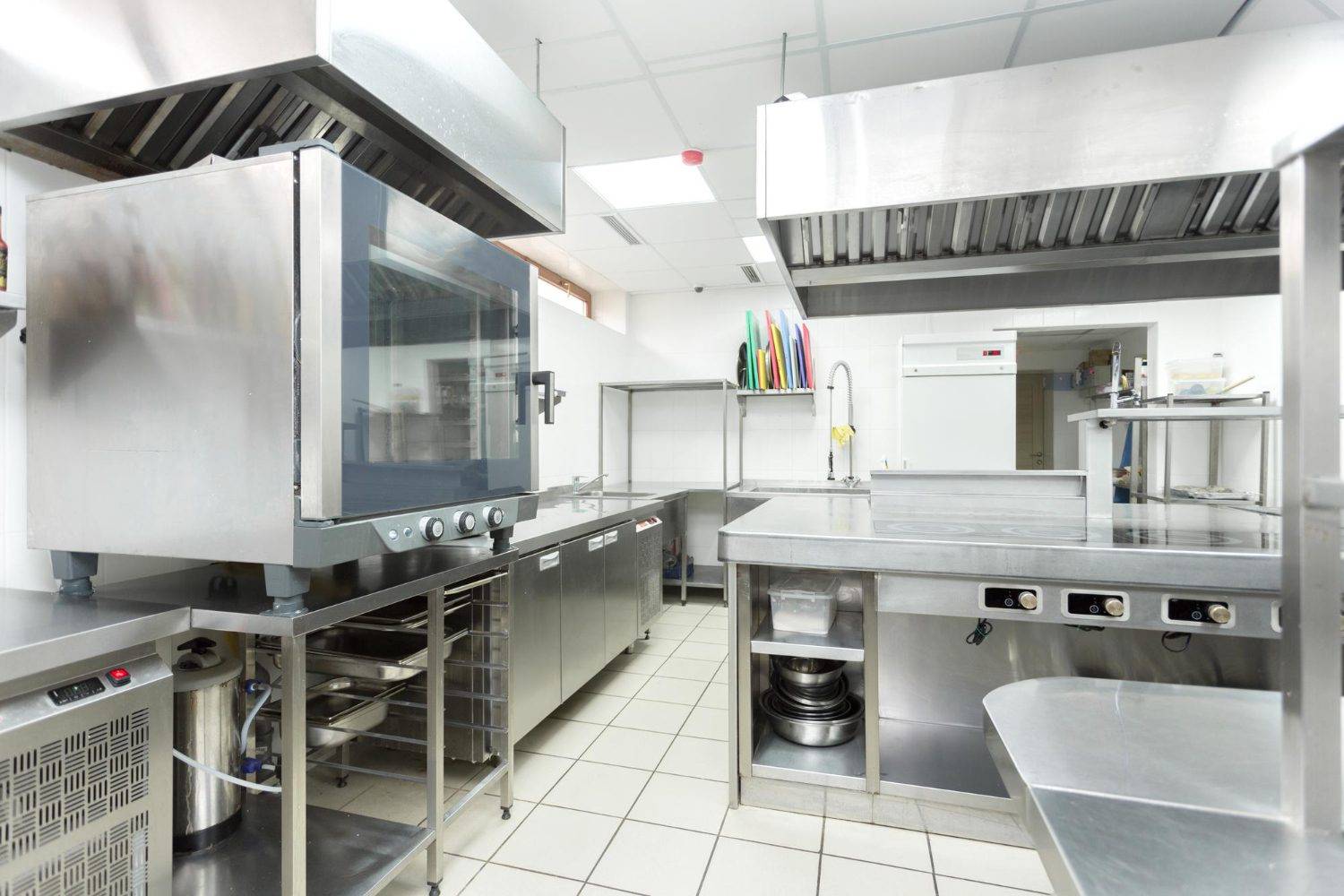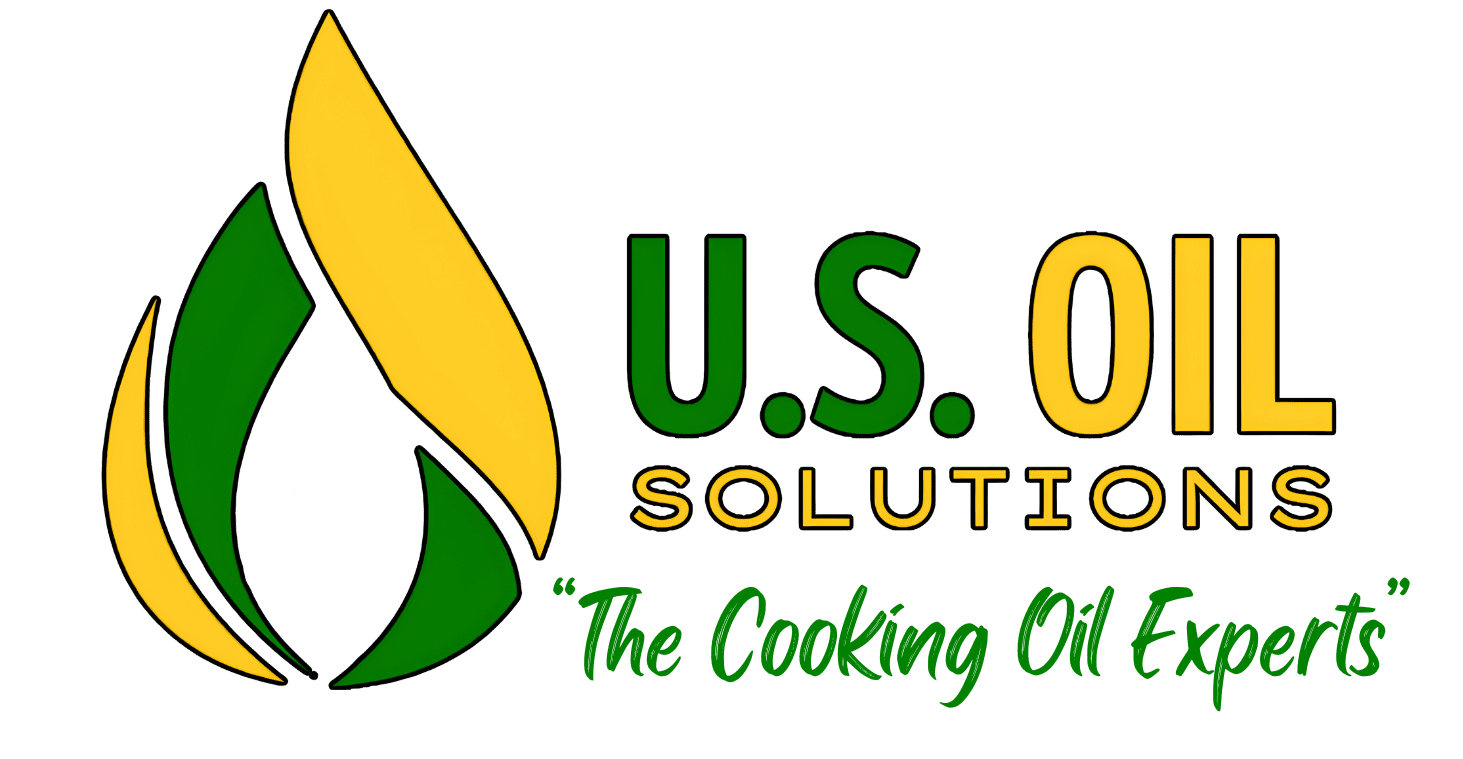
Maintaining a spotless commercial kitchen is crucial for ensuring food safety, enhancing efficiency, and prolonging the lifespan of kitchen equipment. A clean kitchen not only meets health and safety standards but also creates a welcoming environment for staff and customers, reducing the risk of foodborne illnesses and improving overall operational performance.
Deep cleaning commercial kitchens is an integral part of this maintenance, going beyond the daily cleaning tasks to tackle hidden dirt, grease, and bacteria that can accumulate over time. Regular deep cleaning prevents the buildup of contaminants that can compromise food quality and safety, and it also helps in identifying potential issues with equipment before they become major problems.
This comprehensive guide will walk you through the best practices for deep cleaning commercial kitchens, ensuring you keep your kitchen in top condition. From detailed cleaning schedules to the most effective products and techniques, we’ll cover everything you need to know to maintain a hygienic and efficient kitchen environment. Additionally, we will highlight how U.S. Oil Solutions can support your cleaning efforts with our top-tier cooking oil filtration, fryer oil management, and cooking oil products.
Our solutions not only help in maintaining cleanliness but also enhance the efficiency and longevity of your kitchen equipment, providing a comprehensive approach to kitchen maintenance. With U.S. Oil Solutions’ innovative products, you can streamline your deep cleaning processes, reduce waste, and ensure that your kitchen operates at its highest potential.
Section 1: Preparing for Deep Cleaning Commercial Kitchens

Importance of a Deep Cleaning Schedule
Regularly scheduled deep cleaning commercial kitchens is essential to maintain a high standard of hygiene and operational efficiency. A well-planned cleaning schedule helps in systematically addressing all areas that require attention, preventing the buildup of grime and bacteria. Consistent deep cleaning also ensures compliance with health regulations, avoiding potential fines and inspections issues. Moreover, it promotes a safer working environment for kitchen staff by minimizing the risk of slips, falls, and other accidents associated with a cluttered or dirty workspace.
Gathering Necessary Supplies and Equipment
Before starting deep cleaning commercial kitchens, gather all necessary cleaning supplies and equipment. This includes heavy-duty degreasers, disinfectants, scrubbing pads, brushes, microfiber cloths, mop buckets, protective gloves, and safety goggles. Having the right tools on hand ensures a thorough and efficient cleaning process. It’s also beneficial to have specialized equipment, such as steam cleaners and pressure washers, for tackling stubborn grease and grime. Additionally, ensure all cleaning agents are food-safe and appropriate for use in a commercial kitchen environment to maintain both safety and compliance with health standards.
Pre-Cleaning Inspection and Checklist
Conduct a pre-cleaning inspection to identify areas that need special attention. Create a checklist to ensure no spot is overlooked during the deep cleaning process. This checklist should cover all areas of deep cleaning commercial kitchens, including cooking equipment, food preparation areas, storage areas, and floors and walls. Note any areas that may require repairs or maintenance so these can be addressed during the cleaning process. Regularly updating and reviewing this checklist will help ensure that all aspects of the kitchen remain in optimal condition, promoting a consistent standard of cleanliness and efficiency.
Safety Precautions and Protocols
Ensure that all safety protocols are followed during deep cleaning commercial kitchens. This includes wearing appropriate personal protective equipment (PPE), properly ventilating the kitchen, and handling cleaning chemicals safely. Clear communication with the staff about cleaning procedures is also crucial to avoid accidents and ensure a smooth process. Establishing emergency procedures for potential accidents or spills can further enhance safety. Regular safety training sessions can keep the staff updated on best practices and ensure everyone is well-prepared for deep cleaning tasks.
Section 2: Cleaning Cooking Equipment in Commercial Kitchens

Hoods and Exhaust Systems
Hoods and exhaust systems can accumulate a significant amount of grease, posing a fire hazard if not cleaned regularly. This buildup can also lead to poor air quality and unpleasant odors in the kitchen, affecting both staff and customers. Regular cleaning of these systems is crucial to ensure proper ventilation, which helps maintain a safe and comfortable working environment. Neglecting this maintenance can result in costly repairs and increased health inspection violations, ultimately impacting your kitchen’s operational efficiency. Here’s a step-by-step process for deep cleaning commercial kitchens’ hoods and exhaust systems:
- Turn off and disconnect the power supply to the hood.
- Remove the filters and soak them in a degreasing solution.
- Scrub the interior and exterior surfaces of the hood with a heavy-duty degreaser.
- Rinse the filters thoroughly and allow them to dry before reinstalling.
Ovens and Stoves
Cleaning ovens and stoves is essential to remove grease and burnt-on food residues:
- Remove all detachable parts, such as grates and drip pans.
- Use a commercial oven cleaner to spray the interior surfaces.
- Allow the cleaner to sit for the recommended time before scrubbing with a non-abrasive pad.
- Wipe down the exterior surfaces with a degreaser.
For different types of ovens (convection, deck, combi), refer to the manufacturer’s cleaning guidelines for best results during deep cleaning commercial kitchens. These guidelines provide specific instructions that help avoid damaging the equipment and ensure thorough cleaning. Following the manufacturer’s recommendations also helps maintain any warranties and extends the lifespan of your ovens. Proper cleaning techniques tailored to each oven type guarantee optimal performance and safety, contributing to a more efficient and hygienic kitchen environment.
Fryers
Cleaning commercial fryers is crucial to maintain food quality and equipment efficiency. U.S. Oil Solutions offers products that simplify this process:
- Drain the fryer oil and dispose of it according to local regulations.
- Fill the fryer with a cleaning solution and heat it to the recommended temperature.
- Use a fryer brush to scrub the interior surfaces.
- Rinse thoroughly and dry before refilling with fresh oil.
U.S. Oil Solutions’ fryer oil management systems can help streamline this process, making deep cleaning commercial kitchens more efficient and ensuring the longevity of your frying oil. These systems not only filter and purify the oil, extending its usable life, but also reduce the frequency of complete oil changes, saving both time and money. By maintaining cleaner oil, you enhance the quality and taste of your fried foods, which can lead to increased customer satisfaction. These systems also help in reducing the environmental impact by minimizing oil waste and promoting sustainable kitchen practices. Implementing such advanced solutions can significantly improve the overall efficiency and profitability of your kitchen operations.
Section 3: Cleaning Food Preparation Areas in Commercial Kitchens

Work Surfaces and Counters
Sanitizing work surfaces and counters is critical to prevent cross-contamination during deep cleaning commercial kitchens. Ensuring that all surfaces are thoroughly sanitized helps eliminate harmful bacteria and pathogens that can cause foodborne illnesses. Consistent sanitization also maintains a hygienic environment, fostering a safer workplace for kitchen staff. Using food-safe sanitizers is essential to prevent chemical residues from contaminating food and to comply with health regulations. Here are some best practices:
- Clear the surfaces of all items.
- Use a food-safe sanitizer to spray and wipe down the surfaces.
- Pay special attention to seams and corners where dirt can accumulate.
Sinks and Dishwashing Areas
Sinks and dishwashing areas require regular descaling and disinfecting:
- Remove any food debris from the sink.
- Use a descaling solution to remove mineral deposits.
- Disinfect the surfaces with a commercial-grade disinfectant.
- Clean the dishwashing machine according to the manufacturer’s instructions.
Cutting Boards and Utensils
Proper cleaning of cutting boards and utensils prevents cross-contamination during deep cleaning commercial kitchens:
- Scrub cutting boards with hot, soapy water and a brush.
- Sanitize with a bleach solution or a commercial sanitizer.
- Rinse thoroughly and air dry.
Replace cutting boards and utensils regularly to maintain hygiene standards. Over time, these items can develop deep grooves and cracks where bacteria can hide, making them difficult to clean effectively. Regular replacement ensures that you are using tools that can be properly sanitized, reducing the risk of cross-contamination. Investing in high-quality cutting boards and utensils can also enhance the overall efficiency and safety of your kitchen operations.
Section 4: Cleaning Storage Areas in Commercial Kitchens

Refrigerators and Freezers
Regular cleaning of refrigerators and freezers ensures proper food storage and prevents contamination during deep cleaning commercial kitchens:
- Remove all items and dispose of expired or spoiled food.
- Defrost the freezer if necessary.
- Clean the interior surfaces with a mild detergent and warm water.
- Disinfect with a food-safe sanitizer.
Pantries and Dry Storage
Organizing and cleaning pantries and dry storage areas is essential to prevent pest infestations during deep cleaning commercial kitchens:
- Remove all items from shelves.
- Wipe down shelves with a damp cloth and disinfectant.
- Organize items by category and date to ensure proper rotation.
- Implement pest control measures, such as traps and regular inspections.
Section 5: Cleaning Floors and Walls in Commercial Kitchens

Floor Cleaning Techniques
Keeping floors clean prevents slips and falls and maintains a hygienic environment during deep cleaning commercial kitchens:
- Sweep the floor to remove debris.2. Mop with a suitable cleaning solution.
- For stubborn stains, use a scrubber or floor polisher.
Wall Cleaning
Walls can accumulate grease and grime, especially near cooking areas. This buildup not only affects the kitchen’s cleanliness but can also lead to unpleasant odors and attract pests. Regular wall cleaning helps maintain a hygienic environment and improves the overall appearance of the kitchen. Using appropriate cleaning solutions for walls ensures that grease and grime are effectively removed without damaging the paint or surface. Keeping walls clean is essential for meeting health code requirements and creating a safe and pleasant workspace for staff. Regular wall cleaning is a vital part of deep cleaning commercial kitchens:
- Use a degreaser to spray and wipe down the walls.
- Pay special attention to high-touch areas and corners.
Regular cleaning prevents buildup and maintains a clean appearance. It also helps in detecting potential issues early, such as mold growth or structural damage, which can be addressed before they escalate into costly repairs. A consistently clean environment contributes to the overall efficiency and morale of the kitchen staff, as they can work in a pleasant and organized space. Furthermore, a well-maintained kitchen enhances the reputation of your establishment, reassuring customers and inspectors of your commitment to high hygiene standards.
Section 6: Final Touches and Maintenance for Deep Cleaning Commercial Kitchens

Conducting a Final Inspection
After completing deep cleaning commercial kitchens, conduct a final inspection to ensure all areas are thoroughly cleaned. Check for any missed spots and address them promptly. This final inspection should also include verifying that all equipment is reassembled correctly and functioning properly. Documenting the inspection results can help track the effectiveness of the cleaning process and identify areas for improvement in future deep cleanings.
Reassembling Equipment and Restocking Supplies
Reassemble all equipment and restock supplies in their designated places. Ensure everything is functioning correctly before resuming kitchen operations. Take this opportunity to perform any necessary maintenance or minor repairs on the equipment to prevent future issues. A well-organized and fully stocked kitchen not only promotes efficiency but also helps maintain a high standard of cleanliness and readiness for the next service period.
Setting Up a Maintenance Schedule
Establish a regular maintenance schedule to keep your kitchen clean and efficient. This includes daily, weekly, and monthly cleaning tasks to prevent the buildup of dirt and grease during deep cleaning commercial kitchens. Assign specific cleaning responsibilities to staff members to ensure accountability and consistency. Periodically review and adjust the maintenance schedule as needed to address any new issues or changes in kitchen operations. Regular maintenance not only helps in maintaining hygiene standards but also extends the lifespan of your kitchen equipment.
How U.S. Oil Solutions Can Support Ongoing Maintenance
U.S. Oil Solutions offers a range of products and services that can aid in the maintenance of your commercial kitchen. Our cooking oil filtration systems and fryer oil management solutions can help keep your kitchen running smoothly and efficiently, reducing the need for frequent deep cleaning and prolonging the lifespan of your equipment. By utilizing our advanced filtration technology, you can maintain high-quality cooking oil for longer periods, which not only enhances food quality but also cuts down on operational costs. Our comprehensive support and training services ensure that your staff can effectively implement these solutions, leading to a more sustainable and well-maintained kitchen environment.
Conclusion
Maintaining a clean commercial kitchen is crucial for food safety, operational efficiency, and equipment longevity. A pristine kitchen not only meets health and safety regulations but also ensures a pleasant working environment for your staff, reducing the risk of accidents and contamination. By following these deep cleaning commercial kitchens tips and incorporating a regular cleaning schedule, you can ensure your kitchen remains in top condition. This disciplined approach will help prevent the buildup of grease and grime, which can lead to costly repairs and downtime.
U.S. Oil Solutions is here to support your efforts with their advanced oil filtration and management products, making your cleaning process easier and more effective. Their innovative solutions help extend the life of your cooking oil, reduce waste, and maintain consistent food quality, all while streamlining your kitchen operations. With U.S. Oil Solutions as your partner, you can focus on delivering exceptional culinary experiences while maintaining the highest standards of cleanliness and efficiency.
FAQs
How often should a commercial kitchen be deep cleaned?
A commercial kitchen should be deep cleaned at least once a month. However, certain areas and equipment, like fryers and exhaust systems, may require more frequent cleaning based on usage. High-traffic zones and heavily used appliances often accumulate grease and grime faster, necessitating more frequent attention. Regular deep cleaning of these areas helps maintain a safe and sanitary environment, preventing potential health hazards and ensuring compliance with health regulations.
What are the most effective cleaning products for commercial kitchens?
Effective cleaning products include heavy-duty degreasers, food-safe sanitizers, descaling solutions, and commercial-grade disinfectants. Always choose products that are safe for use in food preparation areas. Opt for eco-friendly cleaning agents when possible to reduce environmental impact and create a safer kitchen atmosphere. Using the right products not only ensures thorough cleaning but also helps in maintaining the integrity of your kitchen surfaces and equipment, prolonging their lifespan.
How can U.S. Oil Solutions’ products improve my kitchen cleaning process?
U.S. Oil Solutions’ products, such as cooking oil filtration systems and fryer oil management solutions, help maintain the cleanliness and efficiency of your kitchen. These products reduce the buildup of grease and prolong the life of your cooking oil, making the cleaning process easier and more efficient during deep cleaning commercial kitchens. Implementing these solutions can lead to significant cost savings by reducing the frequency of oil replacements and minimizing equipment wear and tear. Furthermore, the improved oil quality enhances the taste and texture of your food, ensuring a better dining experience for your customers.


